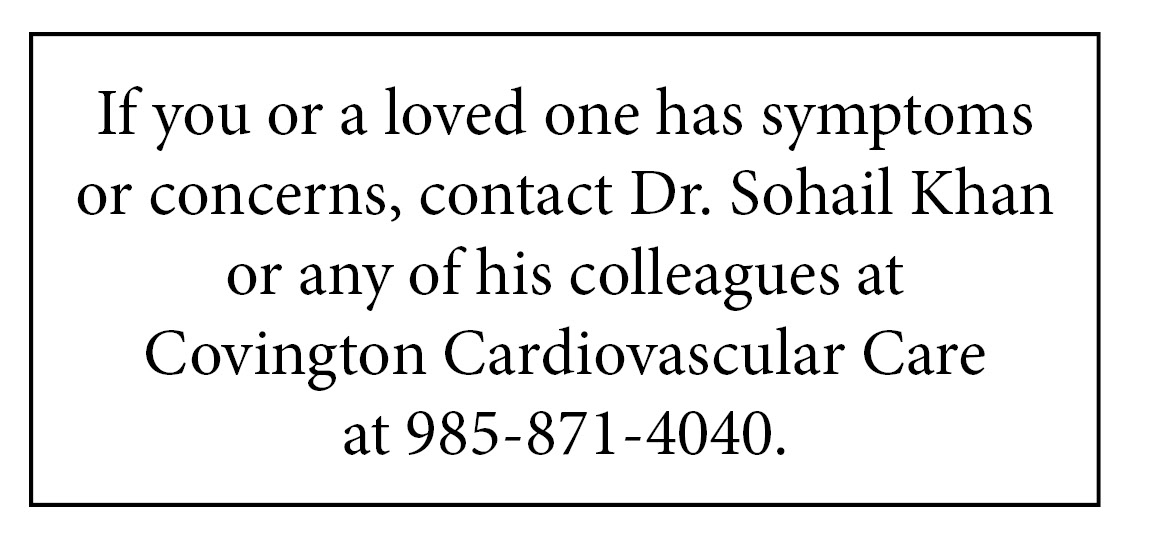Khan: How to Avoid PAD, Stroke
AVOIDING PERIPHERAL ARTERY DISEASE, STROKE
WITH CARDIOLOGIST SOHAIL KHAN MD,
COVINGTON CARDIOVASCULAR CARE
This story appear in the Spring 2014 issue of Heart to Heart, which can found online by clicking here.
COVINGTON - About 185,000 amputations occur in the United States each year. Hospital costs associated with the procedure totaled more than $8.3 billion in 2009 alone. Similarly someone in the United States suffers a stroke every 40 seconds, according to the American Stroke Association.
The main cause of both incidents, studies show, is Peripheral Artery Disease (PAD), which commonly is undiagnosed or goes unnoticed by healthcare professionals or patients alike.
An amputation or a major stroke can have an adverse impact on quality of life, but St. Tammany Parish Hospital can help you avoid those pitfalls.
A large part of Dr. Sohail Khan’s practice as a cardiologist with Covington Cardiovascular Care at St. Tammany Parish Hospital is focused on PAD, which occurs when arteries, most commonly in the pelvis and legs, become narrow. The situation is similar to the blockages and narrowing in the heart vessels that lead to heart attack.
People with PAD have four to five times more risk of having a heart attack or stroke. The most common symptoms of PAD include, but are not limited to, cramping, pain or tiredness in the leg or hip muscles while walking or climbing stairs. Typically, the pain goes away with rest but can return when you walk again.
 Left untreated, PAD can lead to gangrene and amputation and in the case of neck vessels, can lead to stroke.
Left untreated, PAD can lead to gangrene and amputation and in the case of neck vessels, can lead to stroke.
Dr. Khan recently treated Covington resident Raymond Chenevert, 60, who had a history of high cholesterol.
Chenevert credits fast, quality care from Dr. Khan and STPH with saving his life.
As blockages in Chenevert’s heart vessels predisposed him to blockages elsewhere, Dr. Khan performed an ultrasound of his neck blood vessels and found a critical blockage on the left side of the neck. Dr. Khan brought Chenevert back to the hospital and inserted a stent on the left side of the neck vessel.
“This really prevented a major stroke from happening,” Dr. Khan said. “Mr. Raymond is back to his normal activities, and because of his brush with death … he is more careful about his diet and is exercising every day.”
###
A full-service acute care facility committed to providing world-class healthcare and the latest technology, St. Tammany Parish Hospital delivers today’s life-improving procedures with the utmost care to area residents with emphasis on wellness, preventive care and disease management close to home. STPH is a self-supporting not-for-profit community hospital; it receives no tax funding. STPH.org